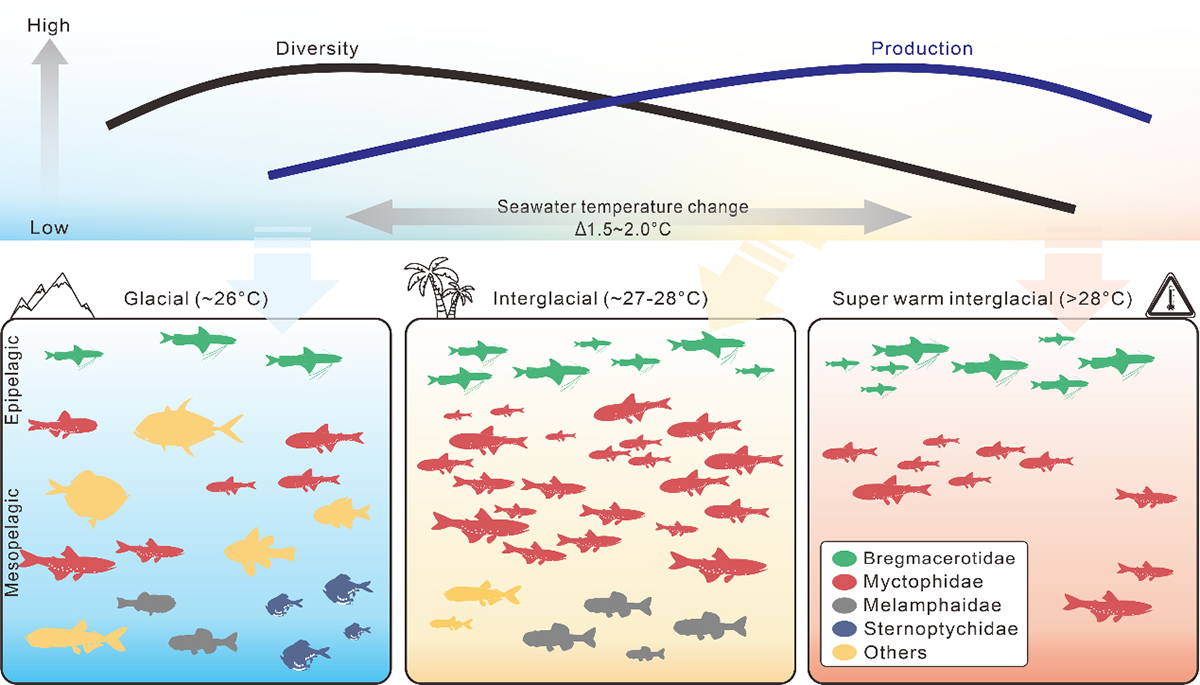▎ACHIEVEMENTS
Exciting Discovery Reveals Link Between Deep-Sea Fish Communities and Changing Seawater Temperatures
In an interdisciplinary research effort spanning over three years, a team of talented scientists based in Academia Sinica (AS) and National Taiwan University (NTU) has unveiled a significant breakthrough in our understanding of the drivers of deep-fish ecology. The study was led by Assistant Research Fellow Dr. Chien-Hsiang Lin from the Biodiversity Research Center at AS, along with Assistant Professor Dr. Li Lo from the Department of Geological Sciences at NTU, and Associate Professor Dr. Chih-Lin Wei and Associate Professor Dr. Sze Ling Ho from the Institute of Oceanography at NTU and has shed light on the intricate relationship between the structure of tropical deep-sea fish communities and fluctuations in the seawater temperatures.
Utilizing exceptionally well-preserved fossil fish otoliths (Fig. 1) extracted from a deep-sea core obtained from the Solomon Sea on the southwest edge of the equatorial Pacific Ocean, the research team meticulously reconstructed the composition of deep-sea fish communities throughout the past 460,000 years. By conducting comprehensive analyses that combined ancient seawater temperature records with fish diversity and abundance, the team uncovered intriguing insights into past deep-sea fish communities.
The analyses revealed a strong correlation between various fish taxa in the mid-ocean zone and seawater temperature. During the cooler ice ages, fish diversity increased while their overall abundance decreased. Conversely, during the warmer interglacial periods, fish diversity declined while their abundance increased. Furthermore, the team observed that only a few heat-tolerant fish taxa, such as Myctophidae and Bregmacerotidae (Fig. 1), managed to thrive in larger numbers during the warm interglacial periods. The most significant finding that bears implications for future climate under high CO2 emission is a substantial decrease in fish diversity and abundance in the “super” interglacial environment, where seawater temperatures surpassed present-day levels. The study further revealed distinct tipping-point temperature for fish diversity and abundance, with a notable difference of approximately 2 degrees in the threshold value (Fig. 2).
This groundbreaking research represents the first fossil record of fish on such a long timescale and with such high time resolution. Furthermore, it establishes the crucial link between deep-sea fish community and seawater temperatures in the tropics on glacial and interglacial timescales. These findings emphasize the profound sensitivity of deep-sea fish in mesopelagic ecosystems to warming seawater, underscoring the ecological challenges they may face if CO2 emissions continue unabated. The conclusions of this study thus call for a thorough assessment of potential repercussions on fish communities in the future under different carbon emission scenarios.



